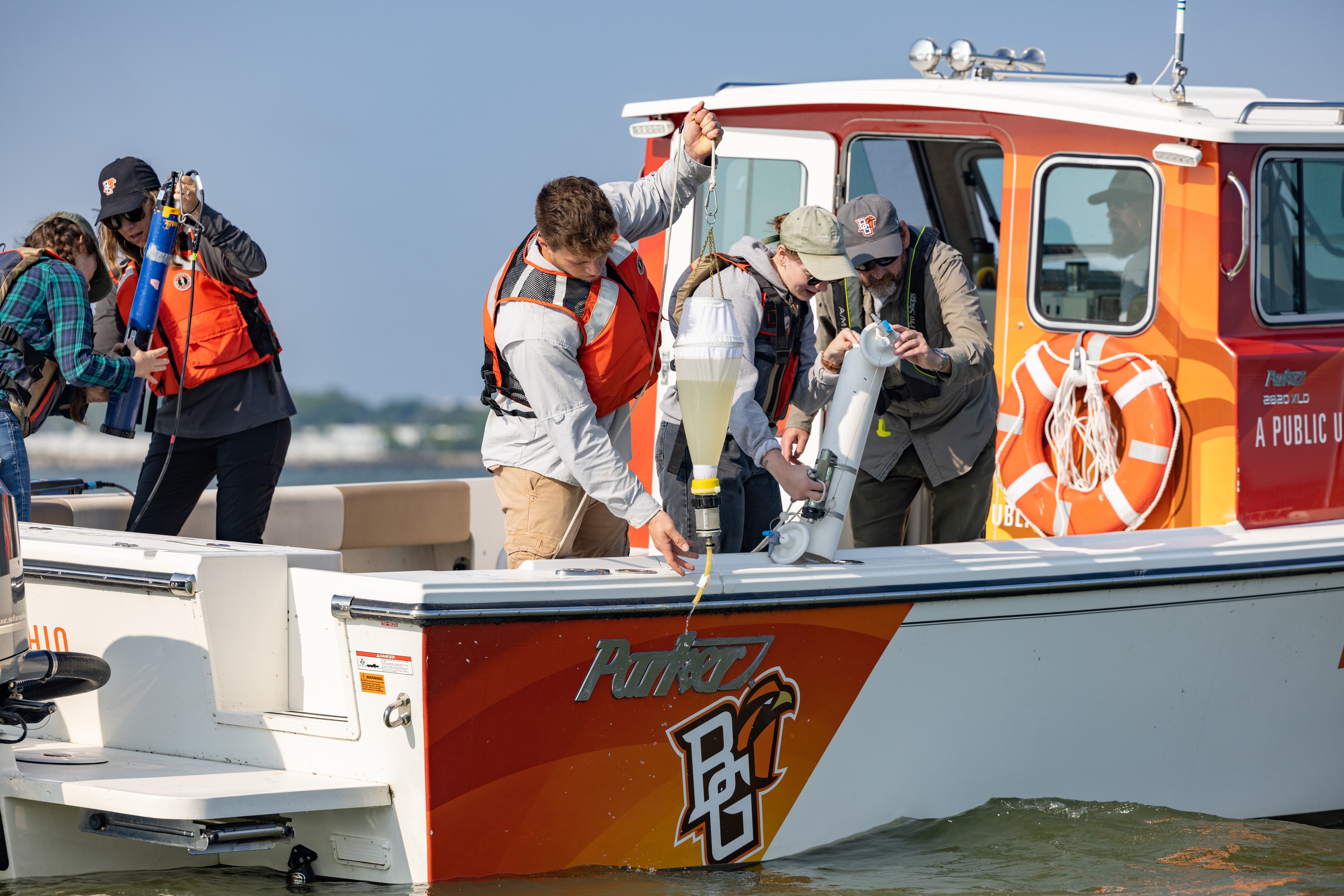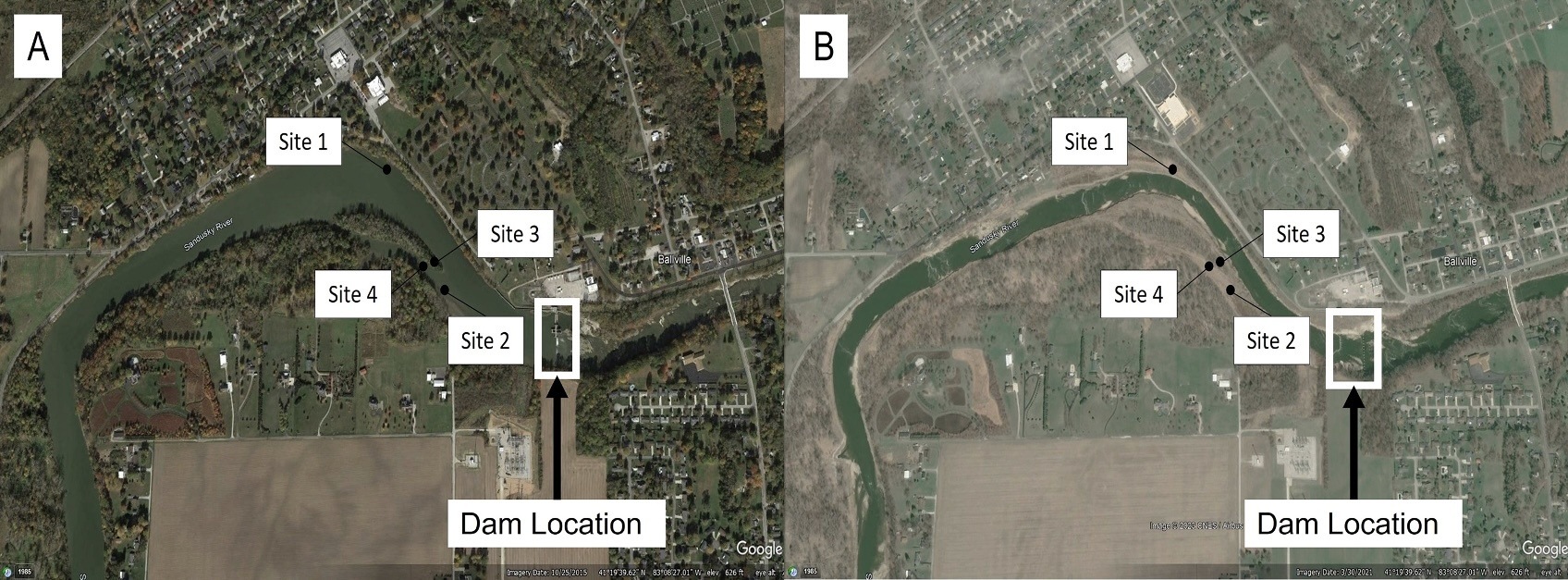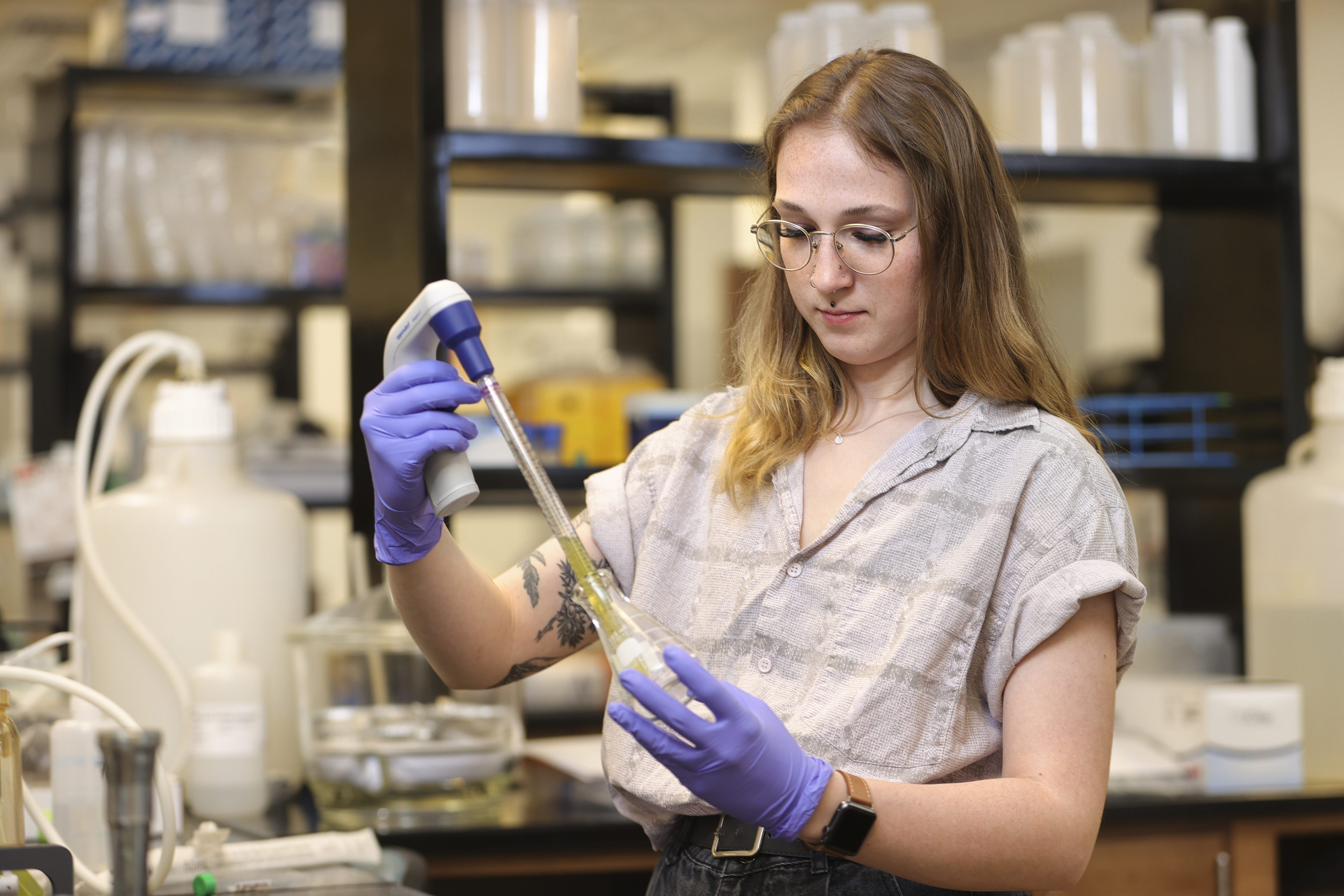
Improving water quality: BGSU research finds reduced levels of harmful algae toxins in Sandusky Bay
Estimated Reading Time:
University scientists attribute absence of toxic cyanobacterium to removal of nearby dam
By Branden Ferguson
After years of detecting harmful algae in Lake Erie’s Sandusky Bay, Bowling Green State University researchers recently discovered that a toxic cyanobacterium called Planktothrix has essentially disappeared. While other algae still are present, BGSU scientists have determined a likely cause behind the drop in toxins, signaling a major improvement for a body of water that millions rely upon for life, work and play.
"The water looked pretty bad in 2019, but we didn't know that it was actually slowly improving," said Dr. George Bullerjahn, BGSU emeritus professor of biology. "In 2020, we started to go out to the bay every week but there was nothing. Since then, we've found benign algae, but no toxins."
With no major adjustments to nutrient loads and not enough time passing for significant changes, BGSU researchers turned their attention to the Sandusky River, which feeds into the bay and experienced a dam removal near the city of Fremont in 2018 to improve fish habitats.
"What we think has happened is that the dam was holding back a reservoir that was full of toxic Planktothrix and it was slowly feeding into the bay where it was flourishing again," Bullerjahn said. "Improving water quality by improving water movement and removing stagnation may be the cause for lower [Planktothrix] levels in Sandusky Bay."
For decades, the western waters of Lake Erie have been plagued with seasonal harmful cyanobacterial algal blooms. In 2014, a major bloom shut down the city of Toledo's water supply, leaving nearly half a million people without drinkable water. Since then, BGSU has deepened its commitment to leading research into understanding and preventing toxic algal blooms that impact freshwater sources, including Sandusky Bay and Africa's Lake Victoria.

Evidence to support the team's hypothesis in Sandusky Bay was confirmed with help from BGSU students, including Kate Brown, who is pursuing a doctorate in biology after choosing the University for its strong research on water quality and cyanobacteria.
"Kate was one of the students checking the sediments in what was once the bottom of the reservoir – now a floodplain in the Sandusky River," Bullerjahn said. "We were looking for residual evidence of Planktothrix and detected both Planktothrix DNA and microcystins in the dirt. It's suggestive that the reservoir had plenty of Planktothrix in it and was the source of the problem."
Since the dam's removal, Bullerjahn said water quality in Sandusky Bay has improved within internationally established drinking standards and is nowhere close to the "no contact" advisory standard that encouraged people to avoid the bay in recent years. Data trends showed continued improvements in 2021, 2022 and 2023. The research team's full findings are described in a recent article published in the journal "Harmful Algae."
"Poor water quality affects drinking water, makes drinking water treatment more expensive and cuts down on recreational activities," Bullerjahn said. "When the World Health Organization contact advisory was posted, people couldn't swim or go water skiing. This recent data provides residents with optimism that those levels are a thing of the past."

With the unexpected yet promising findings, Bullerjahn said the bay's positive change lies outside original improvement plans, which emphasized reducing sediment load to eliminate the toxin.
"Originally, the expectation from the Ohio Department of Natural Resources was to improve water clarity in order to improve water quality," Bullerjahn said. "I think it was a reasonable strategy, but it turns out that they improved water quality by a mechanism that no one could have predicted."
Dr. Chris Ward, assistant professor of biological sciences at BGSU, also has been working with the research team in Sandusky Bay, tracking changes from a microbial community level. Microbial communities contribute to photosynthesis and nutrient cycles, all of which help the ecosystem and wildlife within it thrive.
"The disappearance of the Planktothrix in Sandusky Bay is causing a very large change throughout the entire microbial community, and we're really just starting to determine what all of that means for the rest of the ecosystem," Ward said. "The microbial community and phytoplankton, including Planktothrix, serve as the base of the food web, so anything that happens there has a trickle-up effect."
Equipped with nearly a decade of data from Bullerjahn's team, Ward said he's been able to truly track how things are starting to change for the better in the bay.
"I've gotten the chance to see how the microbial communities have responded, and the data and trends will become more and more valuable the longer we continue the research," he said. "At this point, it's too soon to tell how these changes in the phytoplankton will have on the rest of the ecosystem overall, but things look promising. We just have to wait and find out."
The BGSU research team isn't the only group of people noticing a change, as Bullerjahn said he often hears from boaters regarding improved water quality in Sandusky Bay.
"They've noticed less algae and they are no longer seeing the toxin advisory signs," he said. "Combined with ongoing ecological restoration projects along the shoreline, people will likely see continued water quality improvements signaling positive momentum in Sandusky Bay."
"It has been really impressive seeing the residents around Sandusky Bay being so involved in their body of water," Brown added. "They are passionate about the water quality and wanting to fix it."
While things appear to be changing for the better, Bullerjahn and his team continue to monitor water quality through weekly trips and constant sampling of monitoring from buoys placed throughout the bay.
"It's still early in 2024, but the data shows the same pattern that we've seen over the past few years. I'm expecting similar data to come in throughout the year," he said.
As Brown eyes graduation in the spring, she looks not only to her future but also on her educational journey at BGSU and experiences in the field.
"There are so many opportunities in this particular field of research, and BGSU has allowed students like myself to do these large scale projects and to be involved in the study of harmful algal blooms," Brown said. "I was able to use state-of-the-art technology and learn new techniques to study something I'm passionate about and helped collect data that can lead to real change."
Related Stories
Media Contact | Michael Bratton | mbratto@bgsu.edu | 419-372-6349
Updated: 07/11/2024 01:10PM




